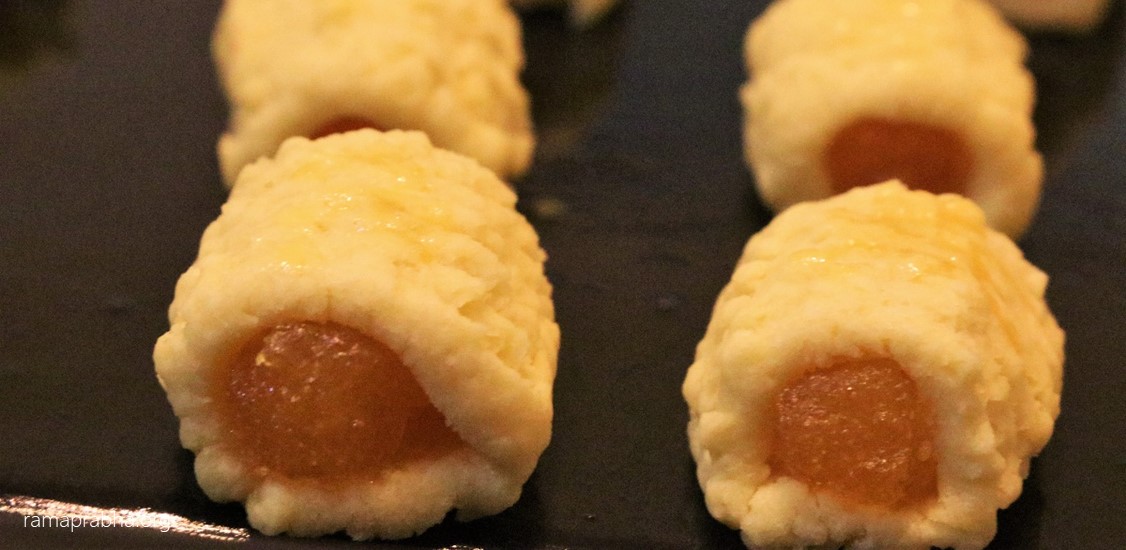Preface: Pineapples are native to Malaysia. Malaysian manufacturers make juices, canned desserts, jams and cookies with them, mostly for the export market. Malaysian mums and wives on the other hand make pineapple jam tarts with them, mostly for festive seasons (we have like 6 or 7 festives in here). Here's a satirical take on how we make them, written in 'Malaysian English'. Enjoy!
Go to Econsave/NSK/AEON Big etc and get 3-4 ripe pineapples. Whichever type. They all look the same anyway. Costs about RM3.50-4.00 each. Better to buy them in whole rather than in kilogrammes.
When you are there, buy plain flour, custard powder, corn starch, sugar (kind of funny if there's no sugar at home), margarine (if you are the upper class type you can use butter of course), eggs (assuming there aren't any eggs at home ....girls these days 🙄🙄) and half a cinnamon stick and 3-4 cloves (if you don't cook at home don't bother buying a full packet of these spices just for the tarts. You can always grab some from your mum's kitchen or mother-in-law’s kitchen 🙂, and if you are shameless enough, you can ask the nearest Indian housewife). On your way home, stop at a mini market that sells household items and ask for pineapple jam tart moulds. They will give you a funny looking instrument. Costs around RM3. Only available in Malaysia (and Singapore of course).
Now that you have bought the ingredients, don't just leave them alone, especially them pineapples. We (or rather I) did that a few days back only to find them weeping some nasty smelling liquid. My mistake was I kept them in a plastic, airtight, on the floor. Which led to us having to make the pineapple jam tarts way ahead of schedule.
When cutting the pineapple, the 'eyes' and the core must be removed. There's an art to cutting pineapples, if you are Malaysian and don't know how to get this done, there's no help for you. But you can try. Please use a sharp knife and a chopping board with gutters (longkang) at the edge because we don't want all the juicy liquid escaping the board and messing the entire kitchen top unless you have some sort of hierarchy in your kitchen department and you are not at the bottom of that hierarchy.
Next chop the pineapple into small pieces and blend them until it becomes puree. Takes 2 minutes. Any pureeing after that shows that you aren't keen to get the job done in time. Pour the puree out into a wok (use a wok, it’s easier to stir rather than a pot), add sugar and drop in that half a cinnamon stick and those cloves. Some recipes recommend that you add yellow colouring but unless your tarts are signed up for a beauty pageant, don't bother with the additional coloring - their natural color looks just as nice and most part of the jam will be hidden in the crust anyway.
Stir the paste and let it thicken into jam. This will take 45 minutes. As the thickening process intensifies, refrain from complaining about how little paste you are getting and risk sounding like a true kiasu. Also, please pay extra attention to the consistency of the jam. It must be really thick for it to be shape-able later. In our experience yesterday, we took it off the stove a little early, and realized later that shaping them was really difficult. Plus there's the risk of the jam going stale due to the moisture it is holding.
Keep the cooled jam in an airtight canister. If you are the perfectionist type, you can attempt the more difficult way of doing things and start shaping the jam into about 120 oblong balls of 1 cm and keep them all arranged on a plate and refrigerated. And then you can rant about how stressful your life is. Your choice.
Next, it's the crust. Beat margarine and sugar together. Add in the egg. Beat even more. Add flour, custard powder and corn starch. Use common sense and add flour in batches unless your mixer is made up of titanium. As it thickens, use hands to knead it into a pliable dough.
Now take the mould. Please wash it thoroughly before using. Moulds are one of those items that in accounting we call them 'slow moving stock'. Slow moving stock that is always found at the end corners of the shop. You get the picture. Okay, now using the mould, press out the dough and cut them into 2 inches long strips. Place a tiny bit of the jam onto the strip and roll the crust. Repeat until either the dough or the jam finishes. If jam remains, use it for teatime (nice on cream crackers or bread.). If dough remains, make your own cream crackers. Or if your maths is really good, try to even the measurements to make sure nothing remains. Lastly, rub some beaten egg on each tart. How to? Dip your finger into a beaten egg and rub some of the gluey egg onto the tarts surface. No need to use brush and all. We are trying to be environmental friendly while eating our tarts. Our fingers need no manufacturing. Brushes do. Simple.
Bake in 170 Celsius for 35 minutes. My previous oven, half the size of the current one, could bake in 20 minutes what takes 40 minutes in the new one. Get to know your oven before turning that timer knob. Alternatively, if your eyesight is still intact, bake until they turn golden on top.
Take them out, cool them for about 45 minutes and arrange them in a see-through airtight container so that you can keep count without having to open the container often. Good luck.
P/S: My recipe had slightly more flour than recommended so that the crust doesn't crumble easily. I also added a few tablespoons of milk to get the right feel when working the dough.













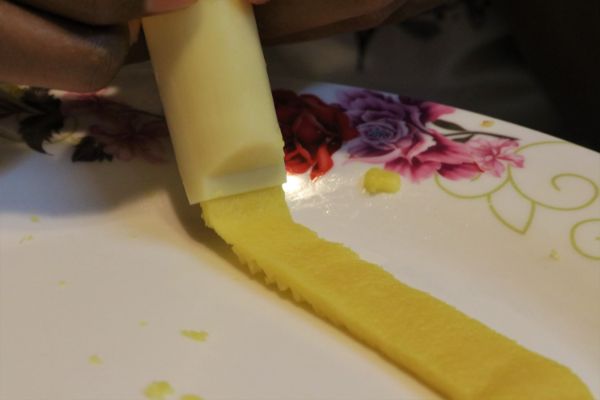
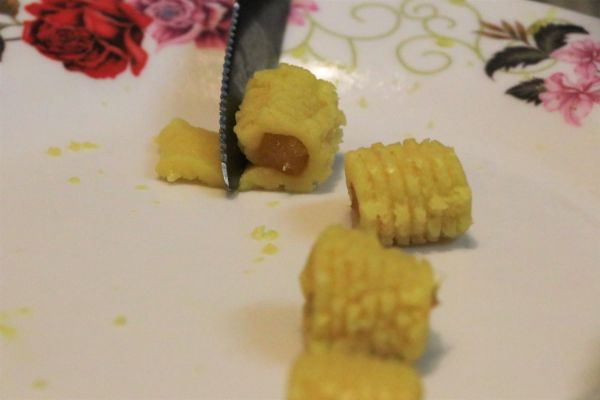
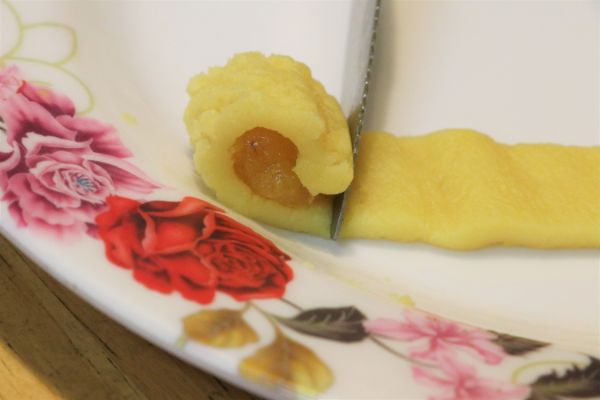




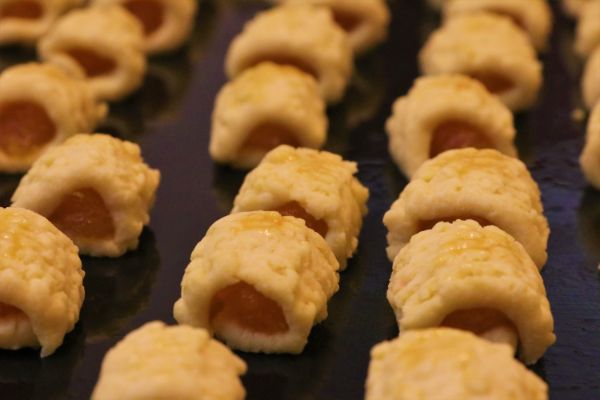
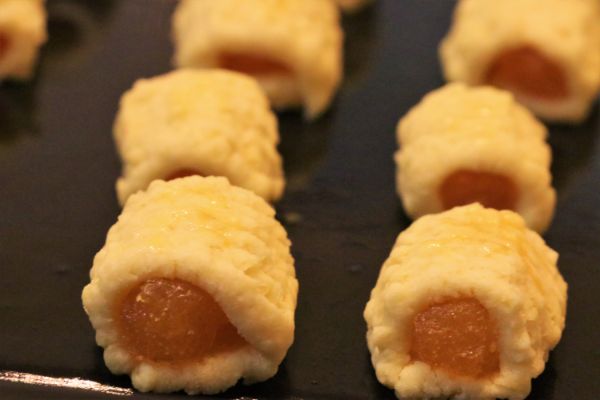
Ingredients:
For the jam:
- 3-4 ripe small/medium sized pineapples
- 1 1/2 cup course sugar
- 4-5 cloves
- 1/2 cinnamon stick
For the crust:
- 50 g icing sugar
- 250 g margarine
- 1 medium egg
- 380 gram plain flour
- 80 gram corn flour
- 2 tablespoons custard flour
- 3 tablespoon milk (optional - just to create the right dough consistency)
This recipe is adapted from https://en.christinesrecipes.com/2011/01/pineapple-roll-tarts-for-chinese-new.html
